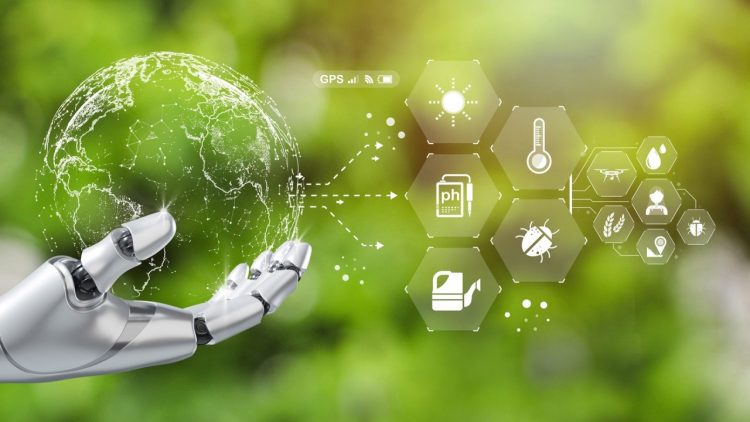
The climate crisis is one of the most pressing challenges of our time, requiring innovative solutions and coordinated global efforts. Artificial Intelligence (AI) has emerged as a powerful tool to address the complexities of climate management. From predicting environmental changes to optimizing resource usage, AI is revolutionizing the way governments, businesses, and communities tackle climate-related challenges. This article explores the transformative role of AI in climate management, highlighting its applications, benefits, and potential future impact.
The Role of AI in Understanding Climate Change
AI excels at processing vast amounts of data, making it an invaluable tool for understanding the multifaceted nature of climate change. With the ability to analyze historical and real-time data, AI models uncover patterns, trends, and correlations that were previously difficult to identify.
a. Climate Modeling and Prediction
AI-powered models are enhancing our understanding of climate systems by:
- Predicting Weather Patterns: Machine learning algorithms analyze meteorological data to improve weather forecasts, helping communities prepare for extreme weather events.
- Simulating Climate Scenarios: AI enables scientists to simulate various climate scenarios based on different emission levels, offering insights into potential outcomes and guiding policy decisions.
- Monitoring Climate Indicators: Satellites equipped with AI detect changes in temperature, sea levels, and ice coverage, providing real-time data for climate studies.
b. Enhancing Accuracy in Climate Science
Traditional climate models often struggle with the complexity of interconnected systems. AI addresses this challenge by integrating diverse datasets—from ocean currents to atmospheric compositions—to create more accurate and reliable predictions.
AI Applications in Mitigation Strategies
Mitigating the impacts of climate change involves reducing greenhouse gas emissions and enhancing energy efficiency. AI supports these efforts through innovative applications:
a. Optimizing Renewable Energy
AI is instrumental in advancing renewable energy solutions by:
- Improving Efficiency: Algorithms optimize the performance of solar panels and wind turbines, maximizing energy output.
- Predicting Energy Demand: AI forecasts energy demand patterns, enabling grid operators to balance supply and demand effectively.
- Smart Grids: AI-powered smart grids manage energy distribution, reduce waste, and integrate renewable sources seamlessly.
b. Enhancing Carbon Capture Technologies
Carbon capture and storage (CCS) systems benefit from AI’s ability to analyze geological data and optimize the efficiency of carbon storage processes. AI also monitors and predicts the behavior of captured carbon to ensure long-term storage safety.
c. Reducing Industrial Emissions
AI-driven solutions help industries lower emissions by:
- Streamlining Operations: Machine learning identifies inefficiencies in manufacturing processes, reducing energy consumption and waste.
- Monitoring Emissions: AI-powered sensors detect and track emissions in real-time, enabling timely interventions.
- Optimizing Logistics: Algorithms improve supply chain efficiency, minimizing the carbon footprint of transportation and distribution.
AI in Climate Adaptation
Adapting to the effects of climate change requires proactive measures to protect communities and ecosystems. AI plays a critical role in enhancing adaptation strategies:
a. Disaster Prediction and Response
AI enhances disaster management through:
- Early Warning Systems: Machine learning models analyze seismic, meteorological, and hydrological data to predict natural disasters such as earthquakes, floods, and hurricanes.
- Resource Allocation: AI optimizes the distribution of relief supplies and emergency services during disasters.
- Risk Mapping: Geographic Information Systems (GIS) combined with AI identify high-risk areas, guiding infrastructure development and evacuation plans.
b. Agricultural Resilience
AI supports climate-resilient agriculture by:
- Predicting Crop Yields: Machine learning analyzes weather patterns, soil conditions, and plant health to forecast crop productivity.
- Water Management: AI optimizes irrigation schedules, reducing water waste and improving agricultural efficiency.
- Pest Control: Algorithms detect and predict pest outbreaks, enabling farmers to take timely preventive measures.
c. Urban Climate Adaptation
Smart cities leverage AI to adapt to climate impacts by:
- Managing Urban Heat Islands: AI designs urban layouts that incorporate green spaces and reflective surfaces to reduce heat.
- Optimizing Water Use: Machine learning models manage urban water systems, preventing shortages and reducing flood risks.
- Improving Public Transport: AI-powered systems optimize transit routes, reducing emissions and congestion.
Challenges and Limitations of AI in Climate Management
While AI offers immense potential, it also faces challenges and limitations that must be addressed:
a. Data Limitations
AI relies on large, high-quality datasets to function effectively. In many regions, particularly in developing countries, data availability and quality remain a challenge. Addressing this issue requires investment in data collection infrastructure and international collaboration.
b. Energy Consumption of AI Systems
Ironically, the computational power required for AI models can lead to significant energy consumption. Developing energy-efficient AI algorithms and leveraging renewable energy sources for data centers is essential to minimize the environmental impact.
c. Ethical and Social Concerns
The deployment of AI in climate management raises ethical questions, including:
- Bias in Algorithms: Ensuring that AI systems do not reinforce existing inequalities or marginalize vulnerable populations.
- Privacy Concerns: Balancing data collection with individual privacy rights.
- Job Displacement: Addressing the potential loss of jobs due to automation in climate-related industries.
The Future of AI in Climate Management
As AI technology evolves, its applications in climate management are expected to expand. Emerging trends include:
a. AI for Carbon Markets
Blockchain-based AI systems are being developed to enhance transparency and efficiency in carbon trading markets. These systems ensure accurate tracking and reporting of emissions reductions.
b. Integrating AI with IoT
The Internet of Things (IoT) complements AI by providing real-time data from interconnected devices. Together, AI and IoT enable smarter climate management solutions, from precision agriculture to intelligent energy grids.
c. Advancing Climate Research
AI is expected to accelerate breakthroughs in climate science by uncovering new insights from complex datasets. For example, deep learning algorithms may identify novel methods for carbon sequestration or uncover previously unknown climate drivers.
Collaborative Efforts for AI-Driven Climate Action
Maximizing the potential of AI in climate management requires collaboration among governments, academia, industry, and civil society. Key initiatives include:
- Public-Private Partnerships: Combining resources and expertise to scale AI-driven solutions.
- Open Data Platforms: Sharing climate data to enhance research and innovation.
- Capacity Building: Training professionals in AI and climate sciences to address skill gaps.
Conclusion
Artificial Intelligence offers transformative potential in overcoming the challenges of climate management. By enhancing our understanding of climate systems, optimizing mitigation efforts, and supporting adaptation strategies, AI paves the way for a more sustainable and resilient future. However, realizing this potential requires addressing the associated challenges, including data gaps, energy consumption, and ethical concerns. With continued innovation and collaboration, AI can become a cornerstone of global efforts to combat the climate crisis, benefiting both people and the planet.





